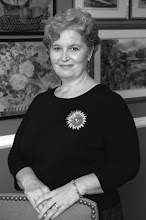
We are pleased to tell you that the National Institutes of Health (NIH) have announced the funding of a five year award aimed at forming a multicenter Dystonia Coalition to advance clinical research on primary focal dystonias. This includes Cervical Dystonia, Spasmodic Dysphonia, Blepharospasm, and others. Leading the Coalition will be H. A. Jinnah, MD, PhD, of Emory University and his co-director is Joel Perlmutter, MD of Washington University. The Coalition will bring together the most committed dystonia researchers in North America and Europe, along with dystonia patient advocacy groups. The Dystonia Medical Research Foundation (DMRF) is proud to play an integral role by providing logistical and planning support for the Coalition. The first meeting of the Coalition is scheduled for November 5th.
The $6 million award will allow the Dystonia Coalition to cultivate a better understanding of the primary focal dystonias and find better therapies. This includes projects to develop a better understanding of their natural history, establish instruments appropriate for monitoring disease severity in clinical trials, and develop proper diagnostic criteria.
Dr. Perlmutter will lead the effort to create a biorepository to store biological samples to support future research, making these resources available to investigators worldwide. Cindy Comella, MD of Rush University Medical Center, will lead the effort to develop a comprehensive rating scale, including assessing quality of life, for Cervical Dystonia and Christy Ludlow, PhD of James Madison University, will be leading the effort to develop tools to diagnose and measure severity of Spasmodic Dysphonia and assess its impact on quality of life.
In addition to these important efforts, this program will support the development of pilot projects that will directly impact diagnosis and therapy development for focal dystonias. Also included in this effort will be the awarding of career development grants to support young investigators in dystonia research.
This is a huge accomplishment for the dystonia community. This award reflects a great deal of work and collaboration among the dystonia research and patient organizations. The work done through this award is so important to helping prepare the community for clinical trials – when new, potential treatments are available. This is something that should be celebrated by all!







